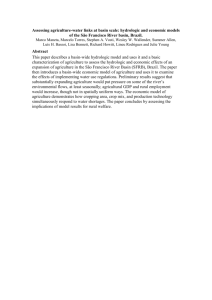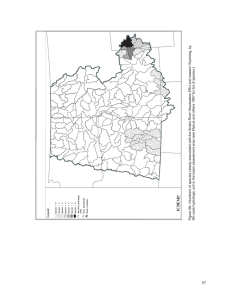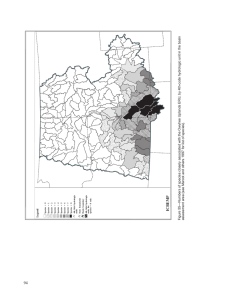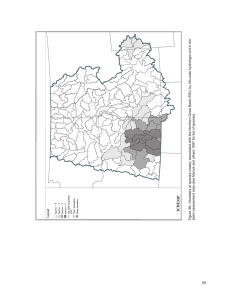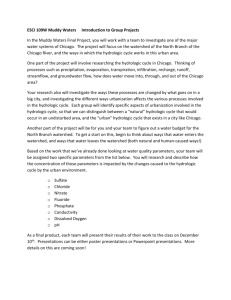Graham
advertisement
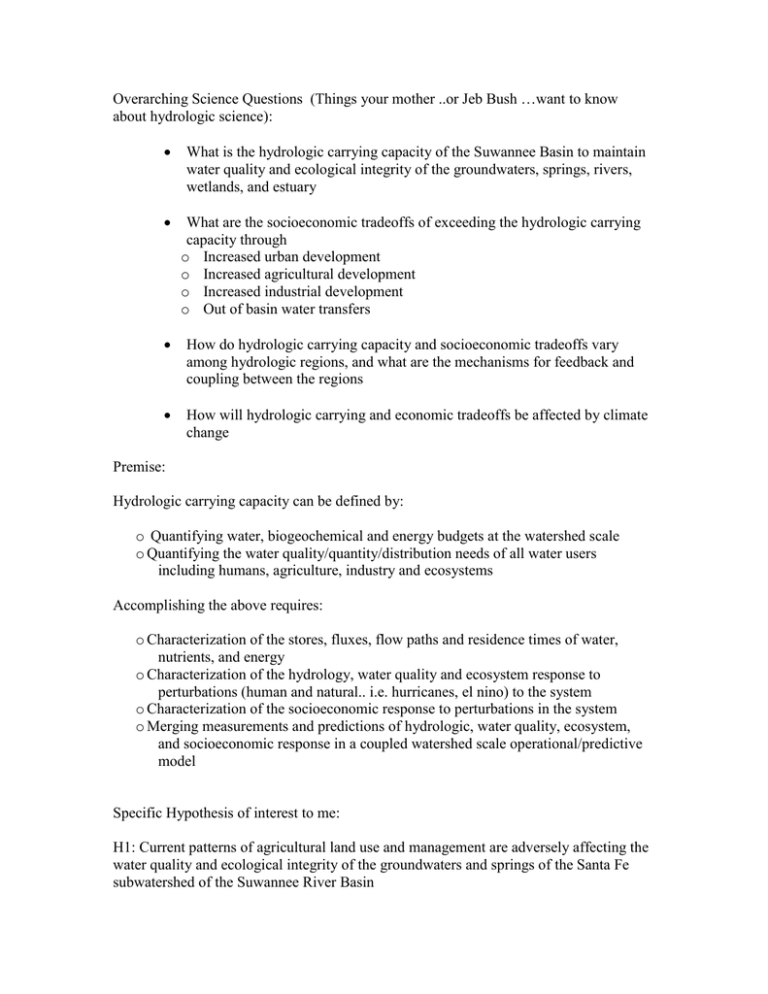
Overarching Science Questions (Things your mother ..or Jeb Bush …want to know about hydrologic science): What is the hydrologic carrying capacity of the Suwannee Basin to maintain water quality and ecological integrity of the groundwaters, springs, rivers, wetlands, and estuary What are the socioeconomic tradeoffs of exceeding the hydrologic carrying capacity through o Increased urban development o Increased agricultural development o Increased industrial development o Out of basin water transfers How do hydrologic carrying capacity and socioeconomic tradeoffs vary among hydrologic regions, and what are the mechanisms for feedback and coupling between the regions How will hydrologic carrying and economic tradeoffs be affected by climate change Premise: Hydrologic carrying capacity can be defined by: o Quantifying water, biogeochemical and energy budgets at the watershed scale o Quantifying the water quality/quantity/distribution needs of all water users including humans, agriculture, industry and ecosystems Accomplishing the above requires: o Characterization of the stores, fluxes, flow paths and residence times of water, nutrients, and energy o Characterization of the hydrology, water quality and ecosystem response to perturbations (human and natural.. i.e. hurricanes, el nino) to the system o Characterization of the socioeconomic response to perturbations in the system o Merging measurements and predictions of hydrologic, water quality, ecosystem, and socioeconomic response in a coupled watershed scale operational/predictive model Specific Hypothesis of interest to me: H1: Current patterns of agricultural land use and management are adversely affecting the water quality and ecological integrity of the groundwaters and springs of the Santa Fe subwatershed of the Suwannee River Basin Data required to test hypothesis: o Accurately quantify land use and land management over space and time o Accurately measure water and nutrient losses from representative land uses o Accurately measure spring water quality and ecology over time o Establish distribution of flow paths and residence times between locations throughout the watershed and springs through tracer studies and other methods o Define important processes for nutrient transport, transformation and uptake in the groundwater/spring system H2: An optimal pattern of agricultural land and managements use exists that exploits the unique geologic, hydrologic, and natural attenuation characteristics of the Santa Fe Watershed Work required to test hypothesis: o Incorporate process based info and measurements determined above into integrated model to preditc hydrologic, water quality, ecosystem, socioeconomic response to alternative agricultural/urban/industrial and conservation land management practices

